General description
A floor lamp is a self-supporting light that stands tall in a room and can be positioned anywhere with a nearby electrical outlet to provide illumination for areas that may not be conducive for a ceiling or wall mounted fixture. Floor lamps are both utilitarian and decorative. They can stand in a corner of a living room, bedroom, dining room or home office out of the way of traffic. Floor lamps are taller versions of table lamps, but they do not occupy space on the buffet, console, nightstand or bedside table.
With remarkable maneuverability as well as an abundance of photometric configurations, floor lamps are versatile enough to participate in a layered lighting scheme in which all three types of light—ambient, task and accent—complement each other within a room to create a fully usable, adaptive space. While contributing to the ambient, task and accent layers of lighting, floor lamps also serve as decorative elements that add visual interest to an interior space and help tie together the personality of the interior decor.
Localized lighting to support visual performance and lighting design
While adequate task lighting is the key to a functional space, implementing the task layer of light in residential and hospitality environments takes on an importance that’s hard to overstate. The high level of task illuminance can break how a room looks, feels and functions, task lighting therefore needs to be defined and controlled in relation to where the task places. Portable lamps are always a good option when layering lighting in spaces where flexibility is paramount. Their portability and plug-and-play operation provide the convenience of changing lighting positions for different usage scenarios and rearranging fixtures at any time to follow design trends. Effective task lighting should eliminate shadows and distribute illuminances uniformly on the task area and take glare control into account.
Task lighting in residences is most effective when it is localized and the reliance on overhead lighting is minimized. Floor lamps are used to accommodate reading or other seated tasks by offering localized pools of light at eye level. They supply a sufficient amount of task illuminance for people to perform visual tasks with efficiency and accuracy while controlling light distribution so that task lighting is free of distracting glare and infringing illuminance outside the task area. A lonely chair or couch is instantly transformed into a cozy reading nook when a floor lamp is added.
Light distribution and glare control go hand in hand
A floor lamp with the functionality of a task light has tighter control of the beam spread than an ambient floor lamp. Light distribution and glare control are achieved with a shade which acts as a reflector to bounce as much light as possible downwards and, in some configurations, upwards as well. The general setup of a task lamp is simple. It has a weighted base or balanced self-standing structure. A tall stem extends from the base to support the light assembly. Since a task lamp is typically placed close enough to a seating area for the light to fall across the visual task, the height of a task lamp is controlled around 4 feet to ensure the shade is just above shoulder height and the light source is not visible from a seated position.
While the bare bones remain ubiquitously identical, task floor lamps come in several types, which include club lamps, tripod lamps, pharmacy lamps, arc floor lamps, articulated arm lamps and swing arm lamps. A club lamp is a stick-supported lamp. It features a slim pole which creates an elegant look. The light assembly is perched atop the pole. A tripod floor lamp is a three-legged fixture with a fixed or adjustable height. Club and tripod floor lamps typically have a fixed light assembly. They are more popular in ambient lighting applications but also used to provide task illuminance for applications that are not visually demanding. Arc, pharmacy, swing arm and articulated arm lamps can direct light to the desired task location without placing fixtures in close proximity. An arc lamp or long-armed lamp can be placed behind a sofa or reach across a table, which provides more elbow room and minimizes obstruction to the line of sight. Those equipped with adjustable arms allow you to move the light assembly around for maximum convenience.
A dramatic blend of art and engineering
Task floor lamps are more than simple functional lighting systems. They should be properly styled to blend seamlessly with the interior design. In some instances, floor lamps need to be ornamental enough to transform a bland room into a captivating space. Floor lamps are offered in a vast amount of styles and aesthetics. Modern décor calls for clean forms and refrains from excessive ornamentation, which applies to modern-styled floor lamps as well. The contemporary style also takes a note from minimalism but captures all designs being produced to match current trends. The transitional style strikes the perfect balance between traditional and modern design to achieve a timeless, conscious blend of masculine and feminine. Traditional styled floor lamps exhibit an attention to detail and have a more ornate and classic look. Rustic styled lamps make use of organic elements in their most natural state. With Mid-century floor lamps, you will notice an absence of superfluous extras or frills and observe a favor for natural shapes that bring together functional form and aesthetics. The aesthetic of floor lamps can draw on other styles as well, for example, glam, coastal, Scandinavian, Tiffany, farmhouse, rustic, industrial, mission and bohemian.
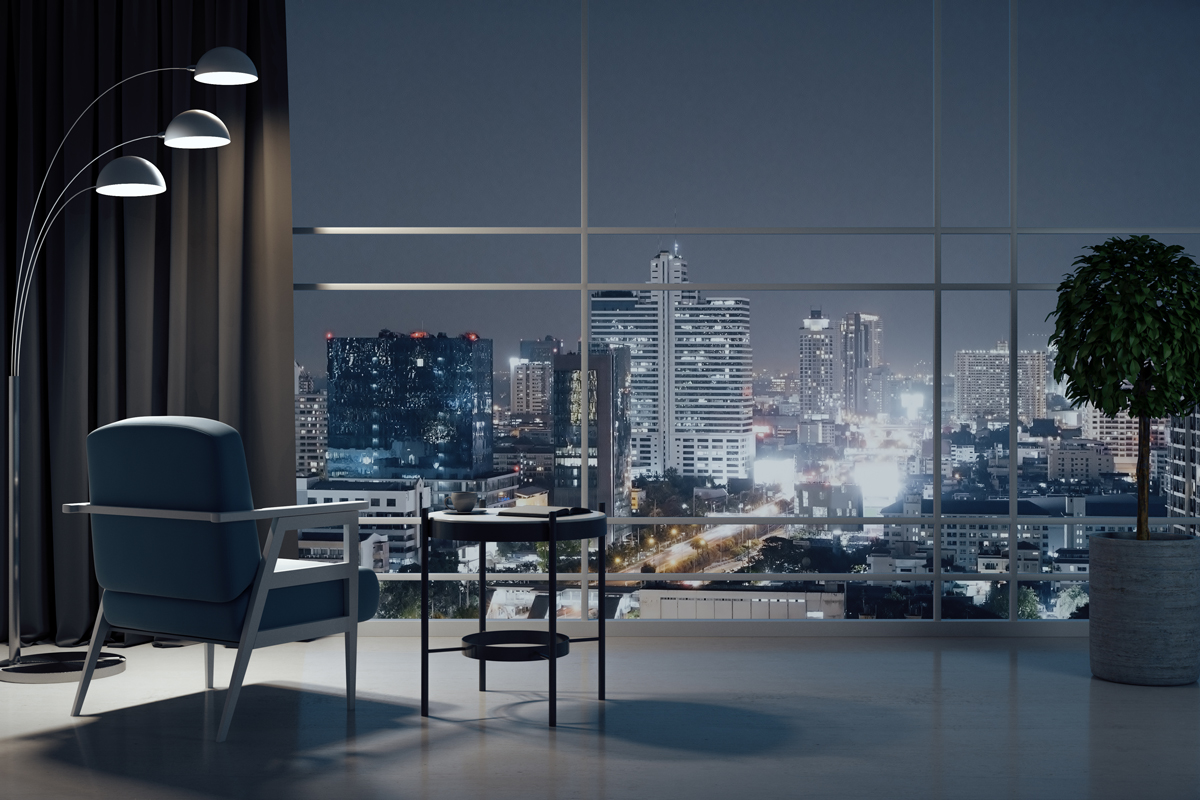
Lamp shades
An instant focal point for a floor lamp is usually the shade. Being the most influential factor of fixture styling, lamp shades boast a variety of shapes which include drum, round, cylindrical, dome, bowl, cone, bell, rectangular, novelty, empire, square, oval and hexagon. They are made from a wide variety of materials as well. Most lamp shades are made of fabric, but it’s not uncommon for a floor lamp to have a metal, glass, linen, cotton, plastic, crystal, silk, rattan or paper shape. Among a selection of color options, you will find lamp shades with popular colors such as white, off-white, black, beige/bisque, brown, gray gold, chrome and silver.
Selection of shade materials should give consideration to the optical property. The ambient and task layers of light are often used in combination to create an appropriate luminous environment. Large luminance variations between the task area and its surrounding area will create adaptation difficulties for the eye and lead to dissatisfaction. The presence of a proper amount of ambient light in the surrounding area is important for visual comfort. Oftentimes, the floor lamp is the sole source of light in a room, or an overhead ceiling light fails to cast a sufficient amount of ambient light to the task area. It is therefore desirable for the floor lamp itself to create an ambience. The lamp shade should have suitable transmittance qualities, allowing a proper amount of light to pass through. For a comfortable luminance adaption, the ratio of task area luminance to surrounding area luminance should be controlled within 5:1.
Stay away from nasty fluorescent lighting
How a floor lamp performs with regards to quality of light, color characteristics, controllability, luminaire efficiency and life, first and above all, is defined by its light source technology. The light source of a floor lamp used to be an incandescent, halogen or compact fluorescent lamp. The drawbacks to incandescent technology are the high cost of maintaining an incandescent installation from its inefficient operation and high frequency lamp replacements, and high bulb surface temperatures that make the bulbs hot to the touch.
Compact fluorescent lamps offer a decent improvement in efficacy and lifespan. The use of these lamps, however, does not hold up under scrutiny. A significant portion of the efficacy gain with fluorescent lighting is achieved by reducing energy in the longer wavelength bands. Deficiencies in longer wavelength emissions lead to a drastically low color rendering accuracy. White light emitted by higher efficacy fluorescent lamps has a cooler appearance. Prolonged nighttime exposure to cool white light can negatively impact on human psychology and physiology.
Compact fluorescent lamps, as commoditized products, often use cheap ballasts, the design of which generally does not take into account flicker control. These gas-discharge lamps also have poor compatibility with electronic controls. In fact, fluorescent lamps should never be considered for task lighting in residences due to their generally poor quality of light and the increased risk of circadian disruption with the use of cool white lamps which have been heavily promoted by the lighting industry.
LED technology rises to dominate the mainstream
The technology that is making headlines is solid-state LED lighting. An LED produces light through radiative recombination of electrons and holes in a compound semiconductor structure. This light-producing mechanism enables a high efficiency conversion from electrical to optical power and an exceptionally long service life.
Nevertheless, the switchover to the new technology in floor lamps is prompted by not only reduced energy and maintenance costs, but also the compelling value propositions arising from harvesting new capabilities offered by LEDs. LEDs can be instantaneously switched-on with no re-strike (ramp-up) time and their life is not affected by high frequency switching cycles. They are inherently dimmable and allow full range dimming. This level of controllability makes it possible to integrate lighting systems with sophisticated logic circuits to drive digitally controlled applications.
LED packages can be spectrally engineered to deliver high color rendering light at a desired color temperature. Additive mixing of multiple colors through multi-channel digital dimming enables dynamic control of the emission spectrum and light intensity to adaptively suit user needs and preferences. Dynamically controllable lighting provides the technical ability to implement a holistic design of the visual, biological and emotional effects of light. Reduced source size and optical directionality of LEDs offer the possibility of new lighting form factors to explore aesthetics in various senses and improve optical control.
Fixture design considerations
While traditional floor lamps can be upgraded to LED fixtures using LED retrofit lamps that are available in virtually all of the previously incandescent shapes and sizes, the profound performance, efficiency, design and application benefits enabled by LED technology can be fully exploited only through an integrated approach to design and engineering. An LED floor lamp generally refers to a light fixture created with a principle that the design philosophy and technology deployment complement each other to achieve a harmony of form and function. In integrating LEDs into a system, the first consideration is to evaluate a fixture’s light distribution, functional and aesthetical requirements.
At the same time, the fixture design should account for the operational characteristics of LEDs. Operating LEDs to specifications involves a multidimensional engineering work which is interdependent upon the thermal management, drive current regulation and optical control systems applied. The light-producing component of an LED floor lamp is usually an LED module formed by populating an array of SMD LEDs onto a metal core printed circuit board (MCPCB). The LED module is interfaced with a heat sink which should move heat away from the LEDs through conduction and convection at a rate that exceeds the rate the thermal energy is being generated at the LED junction. The heat sink and lamp shade may be formed as one piece to maximize surface area for heat dissipation.
Color quality
It is essential to consider the quality of light emitted by a floor lamp as quality lighting contributes to good visual performance, facilitates regulation of the circadian system, and improves quality of life. The color characteristics of the light source and how the emitted light is distributed are two fundamental qualitative factors of lighting.
A light source should be evaluated by its the spectral power distribution (SPD), which defines the correlated color temperature (CCT) and color rendering ability. In residential and hospitality applications light sources with high short-wavelength content are preferred. White light emitted by these sources exhibits a CCT between 2700K and 3200K. The warmer tone tends to create a sense of comfort and impart a feeling of relaxation. Warm white light contains less power in the shorter (blue) wavelengths, which means it is less disruptive to the human circadian rhythm. When the visual task requires a higher level of concentration, neutral white light sources with a CCT between 3500 K and 4100 K are used. Some LED systems incorporate LEDs with different CCTs to provide lighting at one of the predetermined CCTs or a continuously adjustable range of color temperatures for tunable white lighting.
The wavelength distribution of the light generated by an LED also affects sensations of color. The amount of energy (or power) emitted at each wavelength should be balanced to ensure object colors are naturally rendered. LEDs with a minimum color rendering index (CRI) of 85 should generally be employed. Color critical applications necessitate the use of LEDs with a 90 CRI or above. Aside from selections of LEDs with appropriate color characteristics, light emitted by the LEDs must be properly regulated. LEDs are high flux density light sources. The high intensity, concentrated beam of light needs to be distributed uniformly over the task plane. Optical regulation for LEDs is accomplished with opal diffusers or other types of diffusion systems. A more critical practice that should be exercised is that the LEDs should never be visible to the eye. Cumulative exposure to high intensity, blue-enriched light may cause permanent damage to the retina. Because floor lamps are all tall fixtures, children can look into the light source directly. Direct viewing of exposed LEDs can pose a photobiological hazard for young children who have not developed aversion responses.
LED driver
The nearly instantaneous response of LEDs to changing current lends them an exceptional dimming capability, but it also makes them highly susceptible to flicker. This imposes special considerations in the design of LED drivers. While LED floor lamps can be battery powered, most products are designed to accept an AC input. The LED driver needs to convert AC line power to a DC voltage and current appropriate for driving the LEDs. Durin this process, large ripples correlated to residual sinusoidal fluctuations in a waveform must be removed so that LEDs will not reproduce the current waveform and generate flicker. The controllability of the LEDs is entirely dependent on the driver.
An LED driver may be configured to allow step dimming or continuous dimming of the connected LEDs. The commonly used methods for continuous dimming are pulse-width modulation (PWM) and constant current reduction (CCR). CCR dimming can be simple to implement and is used more often in task lamps which usually do not require accurate dimming control. A floor lamp may be equipped with a rotary, footstep, pull chain, toggle button, push, touch sensor, or rocker switch to control for on/off switching and dimming control. The LED driver may also be designed to accept control input through a wireless communication interface such as ZigBee, Wi-Fi or Bluetooth.
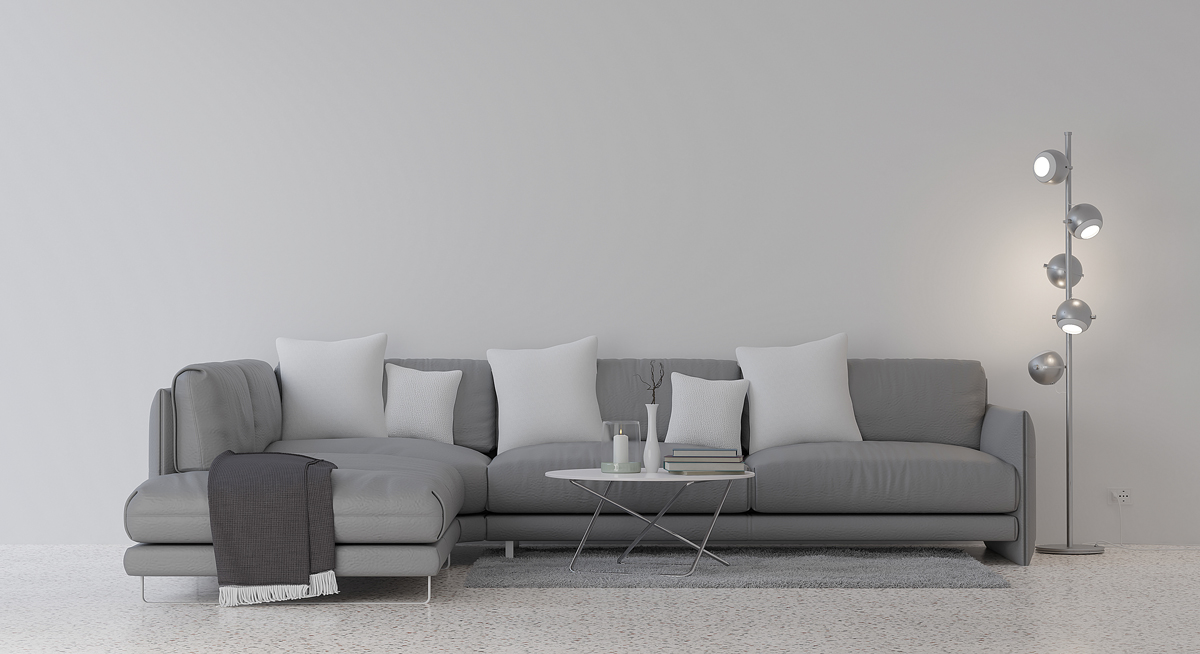

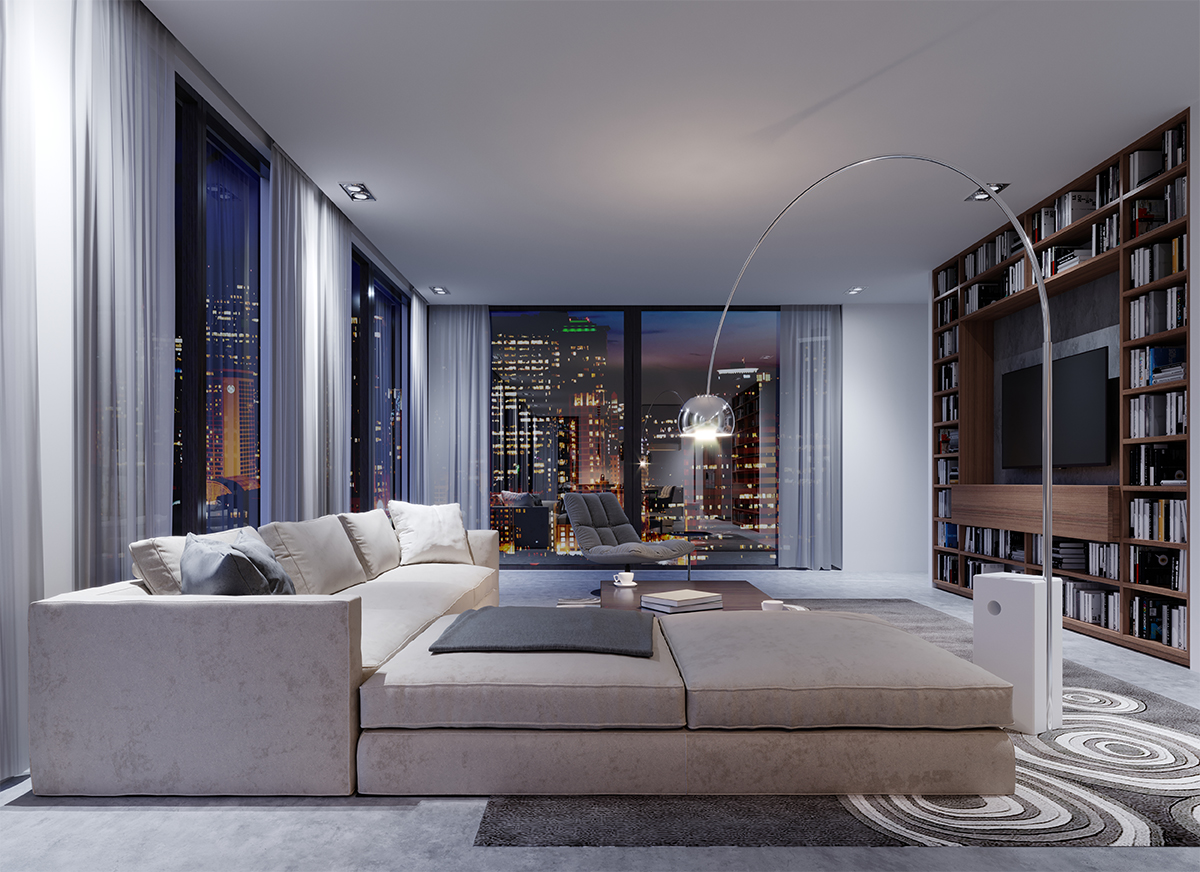

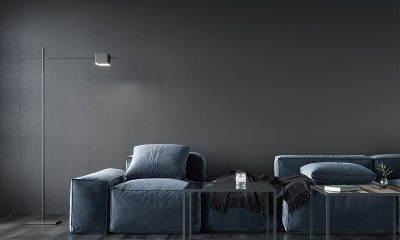
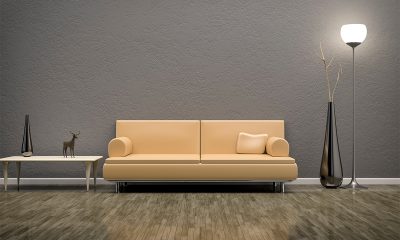

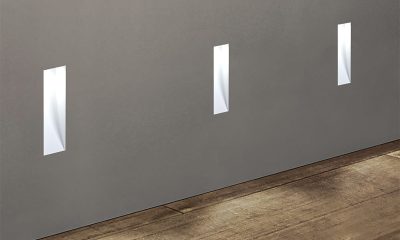
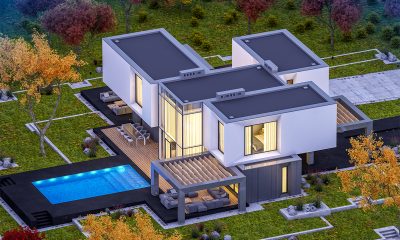

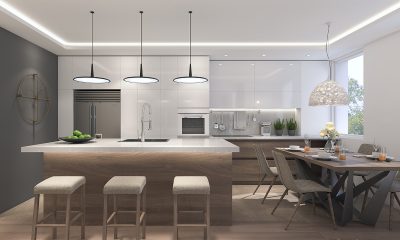
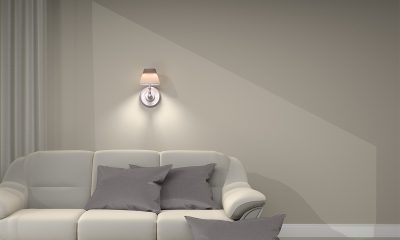
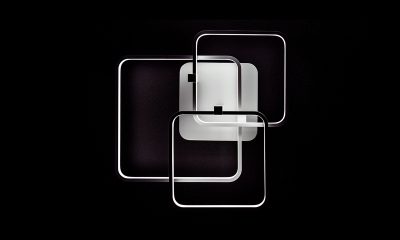
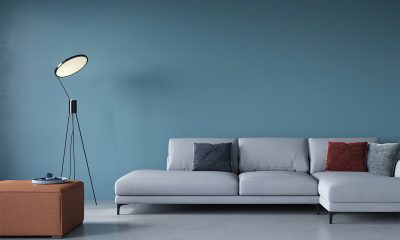
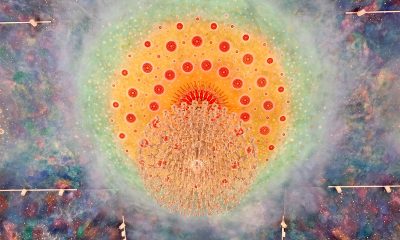





Loading...